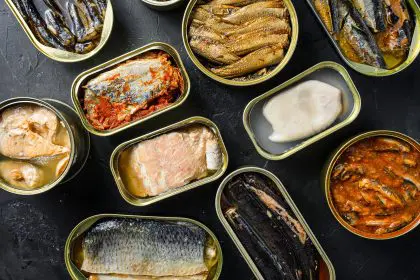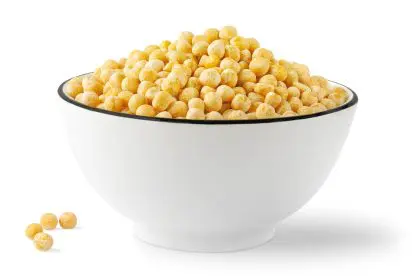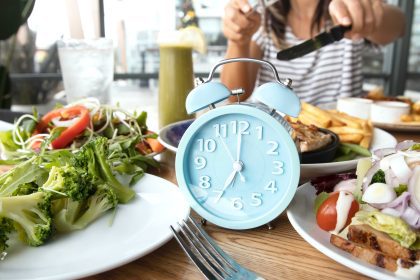Protein plays a vital role in the body, from building muscle to supporting immune function and producing hormones and neurotransmitters. Including protein-rich foods in your diet can support weight loss, improve body composition, and help regulate blood sugar. However, many foods marketed as high in protein fall short of expectations. In this article, we explore common misconceptions about protein sources and highlight foods that genuinely provide the protein your body needs.
Common misconceptions about protein sources
Many foods and beverages claim to be high in protein, but their actual protein content may be lower than advertised. For instance, peanut butter, often considered a protein-rich food, contains just 8 grams of protein per 2 tablespoons. While it does provide some protein, it also packs around 200 calories, meaning you’d need to eat large quantities to get a substantial protein intake, which could lead to excess calorie consumption.
Yogurt: A popular breakfast choice
Yogurt is a popular breakfast item, but not all varieties are equal in terms of protein content. Regular yogurt contains about 8.92 grams of protein per 6-ounce serving, while Greek yogurt offers nearly double that amount—17.3 grams per serving. If you’re aiming to boost your protein intake, Greek yogurt is the superior choice. Additionally, Greek yogurt has about 50% fewer carbohydrates than regular yogurt, making it a better option for those on low-carb diets.
Protein bars: Are they worth it?
Protein bars are often marketed as convenient snacks, but many contain surprisingly few grams of protein. For example, a serving of Kind PB Banana Dark Chocolate Breakfast Protein Bars provides only 8 grams of protein. To maximize the benefits of protein bars, look for those that offer at least 12 grams of protein per serving. Pairing these bars with fiber-rich foods, such as fruit, can enhance satiety and help manage calorie intake.
Smoothies: A potential protein pitfall
Smoothies can be a nutritious option, but they often lack protein unless made with high-protein ingredients. When purchasing pre-made smoothies, choose those offering 15 to 30 grams of protein per serving. Alternatively, you can create your own protein-packed smoothies at home by incorporating frozen fruit, unsweetened milk, and protein powders like whey protein isolate, which provides 25 grams of protein per scoop.
Chia seeds: Nutrient-rich but low in protein
Chia seeds are celebrated for their nutrient density, providing fiber, magnesium, and calcium. However, they contain only 4.68 grams of protein per ounce, which is relatively low for a protein-rich food. While chia seeds are excellent for digestive health, they should be paired with higher-protein ingredients to enhance overall protein intake.
Broths and soups: A surprising source of low protein
Many assume that animal-based broths are high in protein, but this isn’t always the case. For instance, regular chicken broth contains only 3.26 grams of protein per cup. To boost protein intake, opt for bone broth, which contains about three times more protein than regular broth. Using bone broth in soups and stews can significantly enhance their protein content.
Granola bars: A convenient but low-protein snack
Granola bars are often considered a healthy snack, but they typically provide only minimal protein. Many varieties contain just a few grams of protein. To support your protein needs, choose bars that offer at least 12 grams of protein per serving, helping to maintain satiety and stabilize blood sugar levels.
Chickpeas and hummus: A plant-based protein source
Chickpeas are an excellent source of protein, with one cup of cooked chickpeas providing 14.5 grams of protein. However, hummus—made from chickpeas—typically contains only 4.77 grams of protein per quarter cup. To boost the protein content of hummus, pair it with higher-protein foods or consume it in larger quantities.
Milk and plant-based alternatives
Cow’s milk is a good source of protein, offering around 9.68 grams per cup. However, plant-based milks are often low in protein. For example, almond milk provides just over a gram of protein per cup. If you prefer nut milk, consider adding a scoop of collagen peptides, which offer around 12 grams of protein per serving.
Quinoa: A higher protein grain
Quinoa is often considered a high-protein grain, containing 8 grams of protein per cup. While it is higher in protein compared to many other grains, pairing quinoa with protein-rich foods like beans or chicken can help create a more balanced, protein-packed meal.
Building a protein-rich diet
While some foods may not be as protein-packed as they appear, plenty of options can help you meet your daily protein needs. By incorporating a variety of both plant-based and animal-based protein sources into your meals, you can support overall nutrition and health. Consider combining foods like hummus with turkey wraps or adding Greek yogurt to lentil dishes for an effective protein boost.
By being mindful of your protein sources and making informed choices, you can create a satisfying and nutritious diet that supports your wellness goals.















